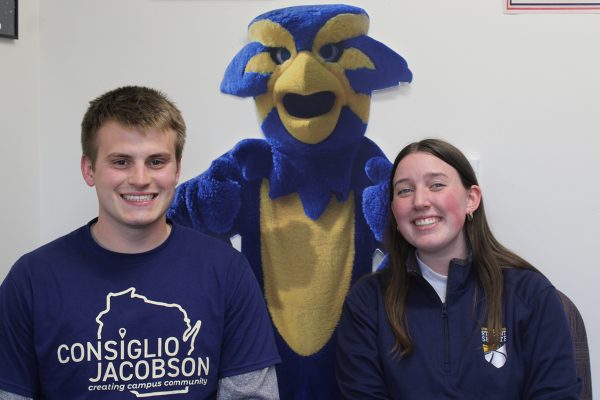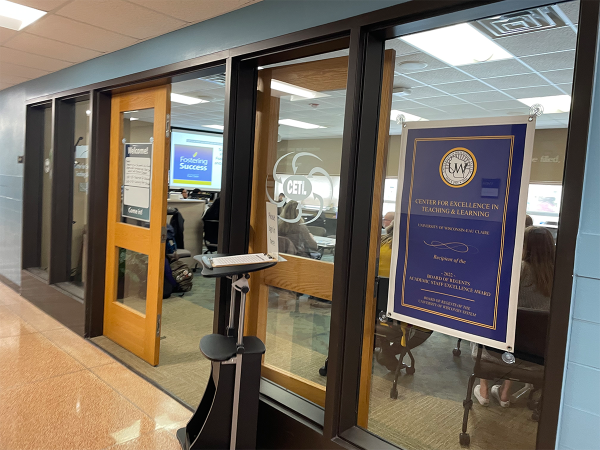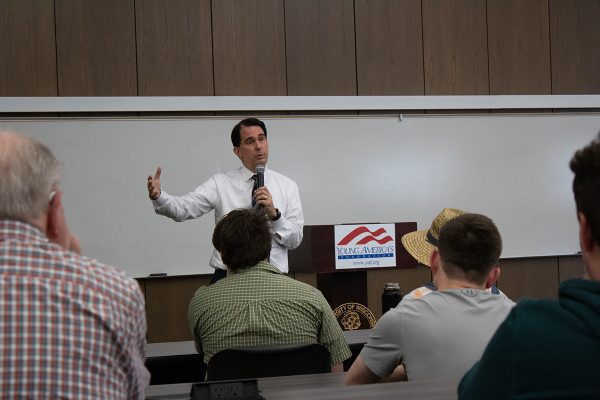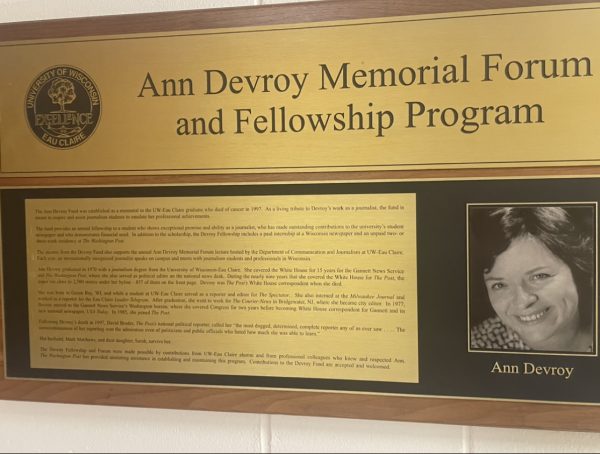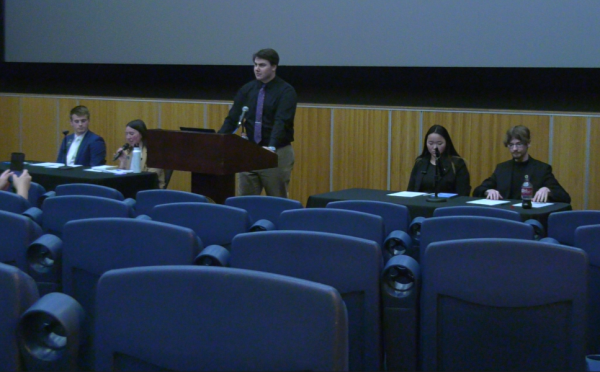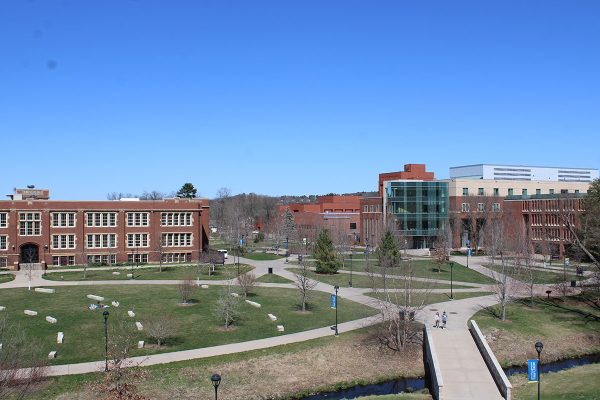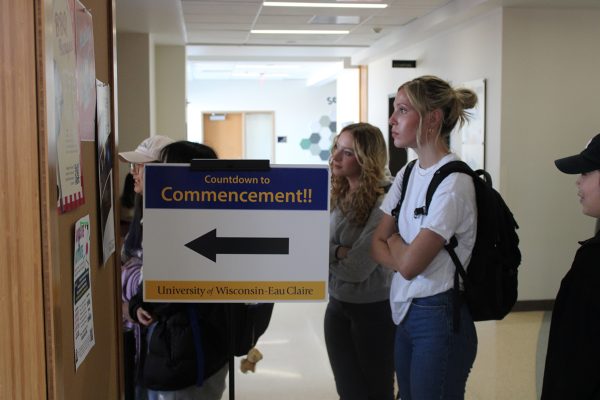Using technology to engage students
New Active Learning classrooms bring teachers new options
This semester, UW-Eau Claire has found a unique way to integrate technology into the learning experience with the addition of many new Active Learning classrooms around campus.
In an Active Learning classroom, the focus is on group work as groups of students sitting in different pod stations. Each pod station is equipped with a large computer monitor, and the instructor can pull up whatever one group is working on at any time and share it with the entire class.
“It gives you more of a one-on-one experience rather than just listening to the professor,” Austin Bower, a sophomore, said about his Active Learning IS 240 class. “You seem more in tune to what’s going on.”
Eau Claire boasts nine Active Learning classrooms that are used for 88 Active Learning courses, which is a large jump from the two Active Learning classrooms and 23 courses Eau Claire had during the fall of 2013. According to the Angie Stombaugh, the director of CETL, Eau Claire currently has more active learning classrooms than any other UW campus.
Student Senate has been a major catalyst for much of the improvements in technological resources around the Eau Claire campus, including the Active Learning classrooms. Student Senate is responsible for budgeting $1.2 million toward technological improvements for students through Wisconsin’s Student Technology Fee legislation.
The Information and Technology Commission of Student Senate is the commission responsible for allocating the funds received from the Student Technology Fee. Senator Christian Paese is the director of this commission, and he said having a technologically advanced campus is important for the success of the university.
“As students become more choosy on where they want to go to school, as technology becomes more important in everybody’s day-to-day life, we need to make sure we’re staying up to date on technology and even ahead of the curve,” Paese said.
The Center for Excellence in Teaching and Learning has also played an important role in the implementation of Active Learning classrooms on campus, especially on the teaching side of the learning experience. CETL and Learning and Technology services work together to form groups that help professors realize what they can do with the technology.
“The hard part with anything is the learning curve,” Stombaugh said. “So faculty have to be willing to spend some of that up-front time learning what the technology is to really integrate it into their classroom.”
But Stombaugh said although the university provides these resources to professors, it is up to them to decide how much or how little technology is best for their classroom and to pick out a specific approach that will be best for their class.
Political science assistant professor John Evans said even though he believes Active Learning classes can work for the right class and instructor, professors should not feel required to use this technology just because it is there.
“Active Learning is just a tool; the goal is learning,” Evans said. “And it’s another tool that might get the students engaged.”

